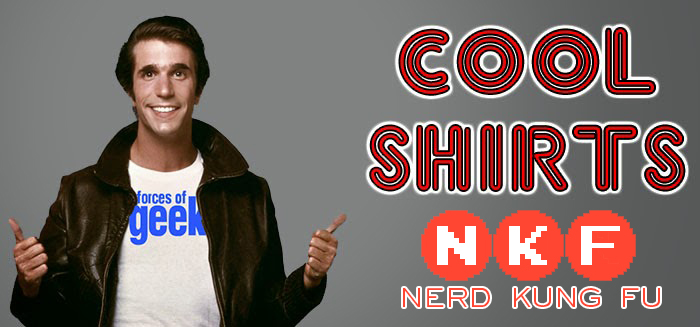
Guest Post by Brittany Bearden and Jeff Bearden
72 percent of customers say social media influences their purchasing decisions. With such a huge potential impact, social media marketing is no longer an optional extra– it’s a must. Yet many businesses fail to see results from their social efforts.
Why?
Simply having accounts is not enough. To truly capitalize on platforms like Instagram, Facebook, and LinkedIn for growth, companies need strategies that are tailored to their unique goals and audience and for each social platform.
The Benefits of Social Media Marketing for Businesses
Social media has many benefits for companies looking to promote themselves online. Some of the key advantages include increased brand awareness and reach, connecting with customers and building relationships, driving website traffic, generating leads and sales, getting real-time customer feedback and insights, showcasing products/services through visual platforms, and promoting content and increasing traffic.
Social platforms allow businesses to get their name and content in front of a wide range of targeted users organically through shares and engagement. Strategic posting and campaigns can dramatically increase visibility. Social networks allow for meaningful interactions between brands and audiences. Businesses can develop communities and loyal followings by regularly engaging followers and posting valuable content.
Strategic linking and sharing of content to social platforms draws users back to your site. Posts can spread organically or be boosted through paid advertising to increase clicks. Promotions and special offers can entice followers to buy products or services. The instant two-way communication of social channels allows companies to collect feedback and understand customer pain points. This data can provide invaluable market research.
Instagram and Pinterest provide ideal visually engaging platforms to display products in lifestyle settings. Humanizing your brand builds connections. Sharing blog posts, videos, webinars, and other content through social networks is a proven tactic to get more eyeballs on your assets.
Choosing the Right Social Media Platforms
With so many social media options out there, businesses need to research and select the best platforms based on where their target audience is most active. Gather insights about your customers. What social platforms do they use? When and how are they accessing these networks? Audience analysis will allow social teams to focus efforts where they will make an impact.
For example, if your business offers products or services targeted towards a younger demographic, you’ll likely want to establish a strong presence on Instagram and TikTok, where this age group is highly engaged. For a B2B company, LinkedIn should be a primary focus, given its professional nature.
Once you identify where your audience is spending time, resist the urge to spread yourself too thin by signing up for every single network. It’s far more effective to begin with just one to three platforms and develop a robust, active presence. Producing quality content tailored to each platform takes significant time and effort. Starting small allows you to establish what works before expanding your reach.
- Facebook – The largest platform, ideal for consumer-facing businesses to build communities and engage followers through content and advertising.
- Instagram – Focused on photo and short video content, making it perfect to showcase products and lifestyle branding, especially for younger demographics.
- X – Great for real-time engagement, networking, listening to customers, and connecting with media members and influencers.
- LinkedIn – The prime social platform for B2B companies targeting professional networks and generating leads.
- Pinterest – Highly visual like Instagram, ideal for retail brands looking to drive traffic and sales through inspirational content. Pinterest is more than just a social platform, it is also a search engine.
- TikTok – A rapidly growing video-based platform reaching younger audiences that can be leveraged creatively for campaigns.
Optimizing Your Social Media Presence
Once you’ve determined the ideal social platforms for your brand, the next step is optimizing your profiles to create a solid foundation for content.
Start by fully completing your profile information on each channel – provide detailed company descriptions, include contact info and links to your website, and use high-quality branded visuals. This builds immediate credibility when new visitors check you out.
Ensure your messaging is consistent across platforms. While the content may differ, your brand voice and visual style should feel cohesive to followers. Maintaining continuity in your social presence establishes trust. Having brand guidelines or that includes logos, colors, fonts, styles, and messaging can help social teams create a wide variety of content that is cohesive across platforms and helps ensure messaging stays on point.
In terms of content variety, share a mix of original photos, infographics, articles, videos, and also relevant news from influencers or curated sources. Balance educational content with visuals and behind-the-scenes peeks to appeal to a wider audience. Only about 20% of your social content should be promotional or sales.
Ongoing engagement is key – don’t just broadcast. Respond promptly to comments and questions, jump into related conversations, and thank people for shares. Building these personal connections fosters loyalty and allows companies to truly connect with their customers.
Social media strategy isn’t a set-it-and-forget-it type of marketing. Continuously analyze your metrics and listener feedback to refine what’s working. Capitalize on your top-performing content forms and topics to keep improving. Shift your strategy as you discover what is resonating and what is flopping and adjust.
About the Authors
Brittany Bearden began her career as a freelancer for a book publicist in 2010, writing hundreds of press releases for his clients. She started her own publicity and marketing agency, At Large Public Relations, with her husband, Jeff Bearden, and continues to enjoy success with a variety of clients, using established methods of traditional PR while embracing and excelling at new opportunities for public relations in the digital age.
Jeff Bearden is a co-founder of At Large PR. As a professional wrestler for 30 years, Bearden had a great deal of experience with the power of PR. After retiring, he came to work with his wife, Brittany Bearden. He is the author of The Man Behind the Makeup: The Professional Wrestling Life and Times of Jeff Bearden, Who Wrestled as Giant Warrior, Big Tiger Steele, Colossus the Gladiator, and Butch Masters.
The Beardens’ clients have been seen on The Ellen DeGeneres Show, in USA Today, Forbes, Entrepreneur, and many more.
Their latest book, DIY PR: A Beginner’s Guide to Getting Noticed by the Media is available now.
















































































































You must be logged in to post a comment Login